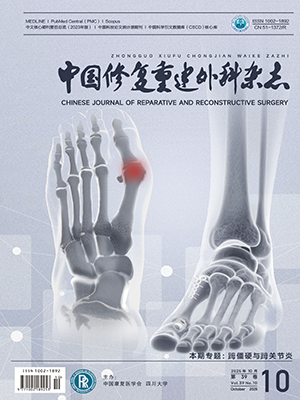Objective To build animal models of keloid by method of tissue engineering and to discuss the feasibility of using it in clinical and lab researches. Methods Fibroblasts(FB) were isolated from keloids and cultured. The seventh and eighth generation of the cultured FBs were inoculated into the copolymers of polylactic acid and polyglycolic PLGA. After being cultured in rotatory cell culture system (RCCS)for 1 week,the FB was transplanted into athymic mice. The specimens were obtained 4 weeks and 8 weeks and examined histologically. Results All mice survived.The collagen patterns of all keloids were pressed in every specimen obtained 8 weeks. Fibrocytes andFB were observed in specimens by electronic microscope. There were abundent rough endoplasmic reticulum (RER) in FB, which indicated that FB’s capability of synthesizing and secreting collagen was preserved and the cellular characteristicwas remained. Conclusion There is a good affinity between PLGAand FB. The composition of PLGA and FB can form keloids in athymic mice,so that it deserves further researching and developing.
Citation: WANG Haibin LUO Shengkang.. HE RESEARCH OF ASSEMBLYING ANIMAL MODELS OF KELOID EMPLOYING THE METHOD OF TISSUE ENGINEERING. Chinese Journal of Reparative and Reconstructive Surgery, 2005, 19(1): 23-27. doi: Copy
Copyright © the editorial department of Chinese Journal of Reparative and Reconstructive Surgery of West China Medical Publisher. All rights reserved




